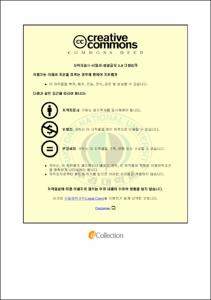한국동해남부해역의 수온이 멸치와 미역의 생산량에 미치는 영향
- Alternative Title
- Effect of Temperature on Catches of Anchovy and Undaria pinnatifida in Southern Part of East Sea of Korea
- Abstract
- 본 논문에서는 1969~2007년간 한국 전체의 어업생산통계자료에서 멸치 및 미역 생산량 중 1990~2007년간 동해남부해역의 변동을 양상을 파악하다. 이 지역의 생산량과 수온(해황)의 관계를 조사하였다. 이를 위하여 국립해양과학원의 같은 기간의 207선 수온자료를 이용하였다. 연안정지 수온은 기장 정점(국립수산과학원)의 자료를 이용하였다. 기온 및 강우량은 기상청의 부산 관측정점의 자료를 조사하였다.
동해남부해역의 생산량이 누년평균 보다 멸치 및 미역 모두 많았던 2005년과 이와 반대인 1993년, 생산량이 누년평균 보다 멸치는 생산량이 많고 미역은 적었던 해인 2001년과 이와 반대인 2000년의 경우를 분석하였다.
먼저 2005년(case 1)은 표층의 저온화 시기가 미역 생산 시기인 4월에 나타나 미역의 생산량이 평균치 보다 많았으며, 표층의 고온화 시기가 멸치의 생장 시기인 6월에 나타나 멸치의 생산량이 평균치 보다 많았다. 이와 반대로 1993년(case 2)은 표층의 고온화 시기가 4월에 나타나 미역의 생산량이 평균치 보다 많았으며, 표층의 저온화 시기가 6월에 나타나 멸치의 생산량이 적게 나타났다.
다음으로 2001년(case 3)은 표층의 고온화 시기가 4월과 6월에 나타나 미역의 생산량은 평균치 보다 적었으며, 이와는 반대로 멸치의 생산량은 평균치 보다 많았다. 그리고 2000년(case 4)은 표층의 저온화 시기가 4월과 6월에 나타나 미역의 생산량은 평균치 보다 많았으며, 이와는 반대로 멸치의 생산량은 적게 나타났다.
이상과 같이 멸치 생산량은 표층이 고온 현상이면 멸치군이 외해로 빨리 이동하지 않아 많았으며, 표면수온이 저온 현상이면 따뜻한 쓰시마 난류역으로 이동을 빨리하였기 때문에 생산량이 적었다. 반면 미역 생산량은 표층의 고온 현상 일 때 미역 생산에 악영향을 끼쳐 생산량이 적었으며, 표층의 저온 현상 일 때는 오히려 성육에 좋은 결과를 가져와 생산량이 많았다. 즉, 표층수온의 저온화 시기가 4월이면 미역 생장에 호영향을 주어 미역의 생산량이 많고, 그 시기가 6월이면 멸치에 악영향을 주어 멸치의 생산량이 적게 나타났다. 반대로 표층수온의 고온화 시기가 4월이면 미역 생장에 악영향을 주어 미역의 생산량은 적었고, 그 시기가 6월이면 멸치에 호영향을 주어 멸치의 생산량이 많았다. 표층 수온이 고온화 되면 멸치 생산량은 증가하고, 표층수온이 저온화 되면 미역 생산량은 증가하는 것으로 나타났다.
This study looked into changes about catches of anchovy and production of sea mustard in Southern part of East Sea in Korea from 1990 to 2007 out of the fishing industry production statistics of Korea from 1969 to 2007, and then examined the relationship between the productions and the sea temperature.
The case of 2005 when the production quantities about anchovy and sea mustard in Southern part of East Sea were all above their annual mean, and the opposite case of 1993 were analyzed. Also, the case of 2001 when catches of anchovy was above its annual mean, while sea productions of mustard was below its annual mean, and the opposite case of 2000 were analyzed.
First, in 2005 (Case 1), a period of decreased sea surface temperature appeared in April, the production period of sea mustard, resulting in increased production of the sea mustard above the annual mean, while a period of increased sea surface temperature appeared in June, resulting in increased catches of anchovy above its annual mean. On the contrary, in 1993 (Case 2), a period of increased sea surface temperature appeared in April, resulting in decreased production of the sea mustard below its annual mean, while a period of decreased sea surface temperature appeared in June, resulting in decreased catches of anchovy below its annual mean.
Next, in 2001 (Case 3), a period of increased sea surface temperature appeared in April and June, resulting in decreased production of sea mustard below its annual mean, and oppositely increased catches of anchovy above its annual mean. And, in 2000 (Case 4), a period of decreased sea surface temperature appeared in April and June, resulting in increased production of sea mustard above its annual mean, and oppositely decreased catches of anchovy below its annual mean.
As above, the catches of anchovy increased when the sea surface temperature was high, as the shoals of anchovy did not move out to the offshore early, while its production decreased when the sea surface temperature was low, as the shoals of anchovy early moved out to the Tsushima Warm Current(TWC) area. On the contrary, the production of sea mustard decreased when the sea surface temperature was high, as it adversely affected its production, while its production increased when the sea surface temperature was low, as this facilitated its growth.
- Issued Date
- 2009
- Awarded Date
- 2009. 8
- Type
- Dissertation
- Publisher
- 부경대학교 대학원
- Alternative Author(s)
- Kim, Chi Hyeon
- Affiliation
- 부경대학교 대학원
- Department
- 대학원 해양생명공학협동과정
- Advisor
- 김동선
- Table Of Contents
- Ⅰ. 서론 = 1
Ⅱ. 자료 및 방법 = 5
2.1 자료 = 5
2.2 방법 = 7
Ⅲ. 결과 = 9
3.1 멸치 및 미역의 생산량 = 9
3.2 수온 연직분포 = 12
3.2.1 멸치 및 미역 생산량이 모두 평년치 보다 높은 해 (2005년) = 13
3.2.2 멸치 및 미역 생산량이 모두 평년치 보다 낮은 해 (1993년) = 18
3.2.3 멸치 생산량이 평년치보다 높고 미역은 그 보다 낮은 해 (2001년) = 21
3.2.4 멸치 생산량이 평년치 보다 낮고 미역은 그 보다 높은 해 (2000년) = 23
3.3 부산 지역의 평년 기온 및 강우량 = 27
Ⅳ. 고찰 = 30
4.1 멸치 생산량과 수온과의 관계 = 30
4.2 미역 생산량과 수온과의 관계 = 34
4.3 멸치 및 미역의 생산량과 환경과의 관계 = 37
Ⅴ. 결론 = 43
Ⅵ. 요약 = 45
감사의 글 = 47
참고문헌 = 49
- Degree
- Master
- Appears in Collections:
- 과학기술융합전문대학원 > 기타 학과
- Files in This Item:
-
-
Download
 한국동해남부해역의 수온이 멸치와 미역의 생산량에 미치는 영향.pdf
기타 데이터 / 1.5 MB / Adobe PDF
한국동해남부해역의 수온이 멸치와 미역의 생산량에 미치는 영향.pdf
기타 데이터 / 1.5 MB / Adobe PDF
-
Items in Repository are protected by copyright, with all rights reserved, unless otherwise indicated.